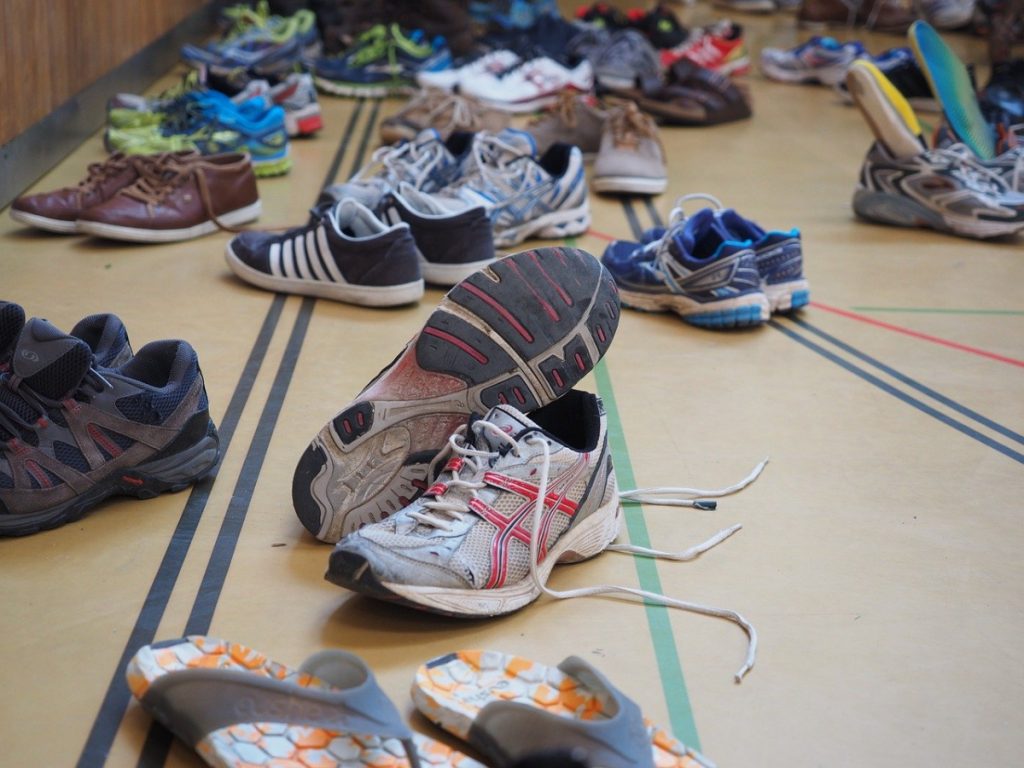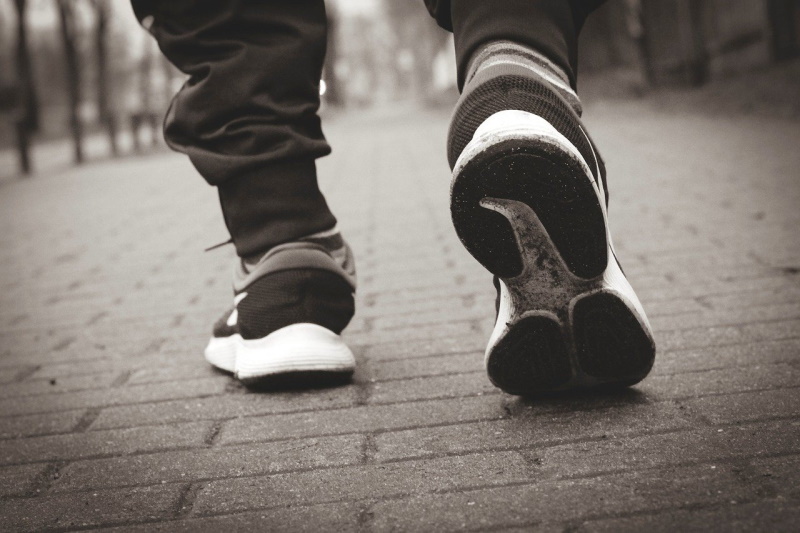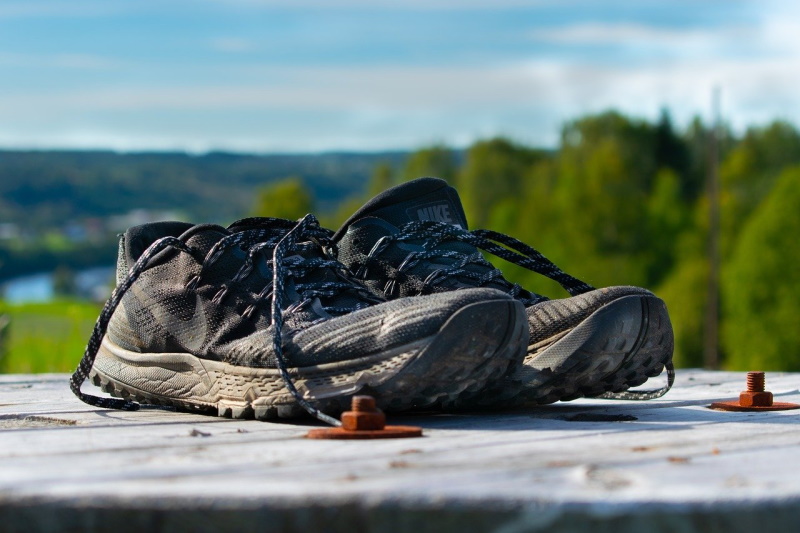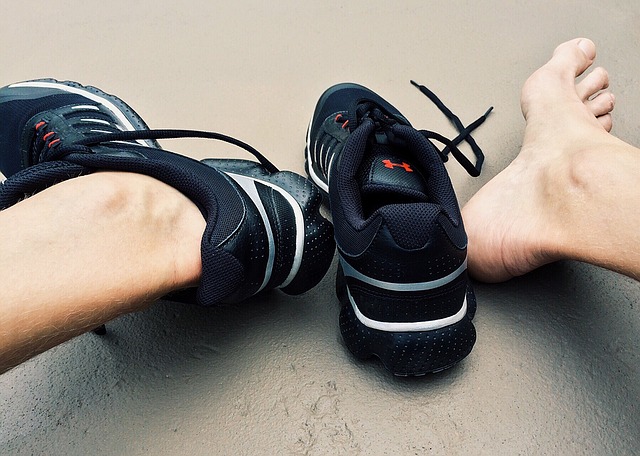Whether you are training for an ultra-marathon or you just run to maintain a healthy lifestyle, running shoes are an essential part of your training gear. They provide protection and comfort, through your runs and workouts. But after some time, the comfort and cushioning that you have been enjoying will come to an end. As a result, your runs and your workouts will not be as enjoyable as they used to be. So, how can you tell when it’s time to replace your running shoes? Let’s find out.
Pain When Running
Whenever you are running, you usually place an immense amount of your body weight on the feet. Fortunately, most running shoes are equipped with ample cushioning, which helps to absorb this impact. Therefore, as long as you are wearing the right pair of shoes, you will never have to deal with leg and feet pain. If you have been enjoying a pain-free running experience but you’ve suddenly started feeling muscle fatigue and pain in your joints and muscles, you need to check your running shoes. While pain in the knees, legs, feet and lower back after a running session can result from several factors, shoes are usually the main culprit. Painful feet, hips, and sore knees are usually a sign that the support and cushioning units built into your running shoes have worn down, and it’s no longer effective. While it can be hard to tell by simply looking at the outsole or midsole of your shoes, your body will definitely tell you when it’s time to make a change.
High Mileage Covered
Whether you are a short distance runner, a marathon runner or a trail runner, it’s important to keep track of all the miles that you cover. Ideally, you should replace your running shoes after clocking a mileage of 300 to 500 miles. This translates to approximately 4 to 6 months for an individual who runs at least 20 miles every week.
However, the actual mileage for replacement will depend on various other factors like your body weight and the surface that you run on. For instance, if you frequently run on dirt-covered, rocky, and rugged surfaces, your running shoes will definitely wear out faster compared to someone who spends most of their running time on the treadmill. Also, if you are overweight, there is a high chance that you will have to replace your running shoes more frequently, compared to an individual who has maintained normal body weight. Furthermore, people with poor running form will wear out their shoes faster, compared to experienced runners. In short, there is no magic formula as to when you should replace your running shoes.
Blistering
Blisters are common in the running community. They usually occur whenever there is excessive rubbing between the skin and the shoe. Wet conditions, sweaty feet, and excessive moisture can all contribute to blisters. But if you normally wear moisture-wicking socks, you run in dry conditions and you are still suffering from blisters, maybe you should check your running shoes. With time, the soft lining inside your running shoes will wear out or come off, thus exposing your feet to harder materials inside the shoes. As much as taping, lubricating your feet, or wearing thicker socks might temporarily prevent the occurrence of blisters, buying a new pair of running shoes that fit your feet properly, is usually the most effective intervention – in the long run.
Signs of Wear and Tear
If your running shoes are showing signs of wear and tear, then it’s time you replace them. Regardless of how much you are attached to them, running with worn-out shoes can leave you with leg and back injuries. Here are some of the common signs to watch out for.
- Outsole: The outsole of a shoe is in constant contact with the ground. It protects your feet against sharp, piecing objects, as well as various other elements. Also, the tread in the outsole provides traction, which helps to prevent sliding and slipping accidents. If the tread of your running shoes is smooth, then you definitely need a new pair.
- Upper: If the upper part of your running shoes has some holes or your toes are already peeking out, then it’s time to invest in a new pair of running shoes. also, if the upper is separating from the outsole, either in its entirety or in some sections, you should abandon those shoes and buy a new pair.
Drop In Performance
When you are running with a new pair of shoes, there is a certain level of pep that you feel in your step. You normally feel great about running, both physically and mentally – and this translates to longer runs, improved fitness, as well as effective workouts. On the other hand, if you are no longer inspired or motivated to go on your morning runs or you no longer have the vigor to go for longer runs, you are falling off pace and you are struggling to attain your weekly milestones, it could be a sign that you need a new pair of running shoes. After running with your shoes for several months, the cushioning will start to break down, and they will lose the comfort that you used to enjoy when they were new. If you want to rejuvenate your running sessions, you should consider investing in a new pair of running shoes.
Poor Fit
When running shoes are new, they normally feel luxurious and cozy when you are walking around or running in them. But after some time, they normally lose that coziness, due to normal wear and tear. For instance, you might notice that your shoes are not feeling as cozy as they used to, they are feeling heavier, looser, and generally uncomfortable. You may also begin to experience some irritation on your toes, or you may even find it harder to obtain a snug fit, even after properly lacing them up. Also, you may notice the materials are stretched, the tongue is not staying in position and even the socks are bunching up beneath the arch. If your running shoes are in such a condition, nothing can bring back the coziness that you used to enjoy when they were new. And it’s time to buy a new pair.
Feeling Uninspired
You might sometimes find yourself in a situation where your daily or weekly runs may start feeling like a burden. In short, they become boring and lack a purpose. The reality is, this is normal and it can happen to anyone, especially if you have been following the same running schedule from Monday to Friday, January to December. Besides changing your training plan, getting a new pair of running shoes will go a long way in helping you get out of your mental running rut. When you refresh things around your training schedule, your running will become more enjoyable and lively, and you will start looking forward to your runs.
Lengthening the Lifespan of Your Running Shoes
Just like other things, the lifespan of your running shoes will depend on how you use them. However, various measures are available, which you can take to extend the lifespan of your running shoes and save money.
First, you should only use your running shoes for the purpose they were designed for. If they are designed for long-distance running, then you should use them specifically for that. On the other hand, if they were designed for short runs, then you should not use them for marathons or triathlons. Different running shoes are designed for different running activities, and there is a reason for that. As much as you can use a single pair for different activities, it’s not advisable to do it. Also, avoid wearing them when undertaking your daily life tasks like fetching groceries from the store, taking your dog out for a walk or playing basketball. All those miles that you will accumulate when performing other errands will definitely shorten their lifespan.
Second, always keep your running shoes clean. Besides making them look nice and fresh, keeping them clean will help to prevent premature wear and tear. Whether you are running on the trail or on a running track, your shoes will come across all sorts of dirt, including stones, sticks, sand, and grit, just to name a few. If this dirt is not removed, it will accumulate in different parts of the shoe, leading to ugly stains, and other forms of damage. Also, this dirt can lead to blisters, especially if it’s lodged inside the shoe. Therefore, you should make it a habit of cleaning your running shoes regularly. However, you should never wash your shoes using the washing machine, regardless of how dirty they are.
Third, avoid drying your shoes using a dryer. Putting your shoes inside the dryer will considerably shorten their lifespan. The heat generated by the dryer will dissolve the glue that holds the different components together, leading to damage. Instead, you should air-dry them.
Fourth, rotate your running shoes. If you run several times per week for several miles, you should have at least 3 or 4 pairs of running shoes. This way, you can clean your shoes after every run, and you will always have a ready pair to wear. Furthermore, rotating shoes will give them ample time to decompress and recover, thus extending their life in the process.
Also, proper storage is vital, if you want to extend the lifespan of your running shoes. Just like other types of shoes, storing your running shoes under direct sunlight or in extremely cold conditions will make them wear out faster. Therefore, ensure you store them in a cool, dry place. Never leave them for long in the trunk of your car, in the gym bag or store them in the garage. Your running shoes need to air out properly.
Closing Remarks
Your running shoes, regardless of how reliable they have been, will not last forever. Therefore, if they have lost their cushioning, their outsoles are worn out or they are showing other signs of wear and tear, you should replace them right away. Running in worn-out shoes can lead to injuries, pain, and discomfort. As much as there are several ways of increasing the lifespan of your shoes, it’s highly advisable to replace them at regular intervals.





0 comments